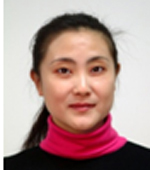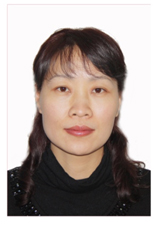Determination and Adult Dietary Exposure Evaluation of Bisphenol A and Bisphenol S in Common Foods

摘 要
鉴于双酚A(BPA)和双酚S(BPS)均具有雌激素效应且与人群接触较多,采用液相色谱-串联质谱法测定408份常见食品(包括水、饮料、大米、小麦、甲壳类、鱼、畜禽肉、蔬菜、罐装谷物、罐装鱼肉、罐装畜禽肉、食用油、蛋类等)中两种酚类化合物的含量,并采用国际每日膳食摄入评估法(IEDI)评估成人膳食暴露量。水样测定方法:在20.0 mL样品中加入3 ng 13C12-BPS、10 ng BPA-d4和0.2 mL氨水,混匀后过活化好的MAX固相萃取柱,淋洗后用5 mL体积比2∶88∶10的甲酸-乙腈-水的混合溶液洗脱,所得洗脱液于45℃氮吹至干,用1.0 mL 20%(体积分数)乙腈溶液复溶,超声30 s,涡旋30 s,过0.22 μm滤膜,滤液供液相色谱-串联质谱仪分析。饮料样品测定方法:在10.0 g样品中加入3 ng 13C12-BPS、10 ng BPA-d4和10 mL含2%(体积分数)甲酸的乙腈溶液(酸化乙腈),涡旋10 min,加入4.0 g无水硫酸镁和1.0 g氯化钠,涡旋3 min,离心5 min,分取5 mL上层乙腈相,加入15 mL 2%(体积分数)氨水溶液,混合均匀后参考水样进行净化。其他样品的测定方法:在2.0 g样品中加入3 ng 13C12-BPS、10 ng BPA-d4、10 mL水和10 mL酸化乙腈,后续处理步骤参考饮料样品。结果显示:BPA和BPS标准曲线的线性范围为0.1~400.0 μg·L-1和0.03~120.0 μg·L-1,BPA、BPS的检出限(3S/N)为0.015~1.0 μg·kg-1和0.005 0~0.20 μg·kg-1;按标准加入法进行回收试验,BPA、BPS的回收率为86.0%~116%和87.0%~112%,测定值的相对标准偏差(n=6)均为1.2%~10%。方法用于408份实际样品的分析,BPA和BPS的总检出率分别为66.4%和29.6%,检出量分别为0.02~148.0 μg·kg-1和0.007~104.0 μg·kg-1,金属罐包装类食品中BPA检出率和检出量均较高;BPA总摄入平均IEDI暴露量上限为48.7 ng·kg-1·d-1,远远低于欧洲食品安全局提出的BPA每日耐受摄入量(4 μg·kg-1·d-1),但BPS的高于以往文献的调查值。总体来说,当前成人膳食暴露水平风险较低,但是仍需加强相关监测及人群健康管理。
 液相色谱-串联质谱法(LC-MS/MS)
液相色谱-串联质谱法(LC-MS/MS)  双酚A
双酚A  双酚S
双酚S  常见食品
常见食品  膳食暴露
膳食暴露  solid phase extraction
solid phase extraction  liquid chromatography-tandem mass spectrometry (LC-MS/MS)
liquid chromatography-tandem mass spectrometry (LC-MS/MS)  bisphenol A
bisphenol A  bisphenol S
bisphenol S  common food
common food  dietary exposure
dietary exposure 
Abstract
Considering that bisphenol A (BPA) and bisphenol S (BPS) had estrogen effects and more contact with the population, liquid chromatography-tandem mass spectrometry was used to determine 2 phenolic compounds in 408 common foods (including water, beverages, rice, wheat, seashells, fish, livestock and poultry meat, vegetable, canned grain, canned fish, canned livestock and poultry meat, edible oil, egg and so on), and the international estimated daily intake (IEDI) was used to assess the value of adult dietary exposure. Water samples were determined as follows:20.0 mL of sample together with 3 ng of 13C12-BPS, 10 ng of BPA-d4 and 0.2 mL of ammonia water were mixed evenly, and passed through a activated MAX solid phase extraction column. The column was eluted with 5 mL of formic acid-acetonitrile-water mixed solution at volume ratio of 2:88:10 after rinsing. The eluate was blown to dryness by nitrogen at 45℃, and the residue was redissolved with 1.0 mL of 20% (volume fration) acetonitrile solution, ultrasonicated for 30 s, swirled for 30 s, and passed through a 0.22 μm filter membrane. The filtrate was analyzed by liquid chromatography-tandem mass spectrometer. Beverage samples were determined as follows:10.0 g of sample together with 3 ng of 13C12-BPS, 10 ng of BPA-d4 and 10 mL of acetonitrile solution containing 2% (volume fraction) formic acid (acidified acetonitrile) were vortexed for 10 min, and 4.0 g of anhydrous magnesium sulfate and 1.0 g of sodium chloride were added for vortex for 3 min and centrifugation for 5 min. An aliquot (5 mL) of the upper acetonitrile phase was taken, and mixed with 15 mL of 2% (volume fraction) ammonia aqueous solution, and the mixed solution was purified with reference to the water sample. Other samples were determined as follows:2.0 g of other samples together with 3 ng of 13C12-BPS, 10 ng of BPA-d4, 10 mL of water, and 10 mL acidified acetonitrile were mixed, and the subsequent processing steps referred to beverage samples. As found by the results, the linear ranges for the standard curves of BPA and BPS were 0.1-400.0 μg·L-1 and 0.03-120.0 μg·L-1, with detection limits (3S/N) of BPA and BPS in the ranges of 0.015-1.0 μg·kg-1 and 0.005 0-0.20 μg·kg-1, respectively. Test for recovery was conducted by standard addition method, and recoveries of BPA and BPS were in the ranges of 86.0%-116% and 87.0%-112%, with RSDs (n=6) of the determined values in the same range of 1.2%-10%. The proposed method was applied to the analysis of 408 actual samples, and the total detection rates of BPA and BPS were 66.4% and 29.6%, with detection amounts in the ranges of 0.02-148.0 μg·kg-1 and 0.007-104.0 μg·kg-1, and the detection rate and amount of BPA in metal canned foods were relatively high. Average IEDI exposure value for total intake of BPA was 48.7 ng·kg-1·d-1, significantly lower than the tolerable daily intake (4 μg·kg-1·d-1) proposed by the European Food Safety Agency, but that of BPS was higher than the survey value in previous literature. In overall, the risk of current dietary exposure level in adults was still low, but relevant monitoring and population health management still need to be strengthened.
中图分类号 O657.63 DOI 10.11973/lhjy-hx202308006
所属栏目 工作简报
基金项目 浙江省分析测试项目(LGC19H260002);浙江省医药卫生项目(2021439864);宁波市自然基金项目(2019A610441)
收稿日期 2021/9/28
修改稿日期
网络出版日期
作者单位点击查看
联系人作者金米聪(jmcjc@163.com)
备注周健,助理研究员,硕士,主要从事理化分析工作
引用该论文: ZHOU Jian,CHEN Xiaohong,JIN Micong. Determination and Adult Dietary Exposure Evaluation of Bisphenol A and Bisphenol S in Common Foods[J]. Physical Testing and Chemical Analysis part B:Chemical Analysis, 2023, 59(8): 903~910
周健,陈晓红,金米聪. 常见食品中双酚A、双酚S的含量测定及成人膳食暴露评估[J]. 理化检验-化学分册, 2023, 59(8): 903~910
共有人对该论文发表了看法,其中:
人认为该论文很差
人认为该论文较差
人认为该论文一般
人认为该论文较好
人认为该论文很好






参考文献
【1】LIAO C Y, KANNAN K. Widespread occurrence of bisphenol A in paper and paper products:Implications for human exposure[J]. Environmental Science & Technology, 2011,45(21):9372-9379.
【2】VANDENBERG L N, CHAHOUD I, HEINDEL J J, et al. Urinary, circulating, and tissue biomonitoring studies indicate widespread exposure to bisphenol A[J]. Ciencia & Saude Coletiva, 2012,17(2):407-434.
【3】CUNHA S C, FERNANDES J O. Assessment of bisphenol A and bisphenol B in canned vegetables and fruits by gas chromatography-mass spectrometry after QuEChERS and dispersive liquid-liquid microextraction[J]. Food Control, 2013,33(2):549-555.
【4】IVRY DEL MORAL L, LE CORRE L, POIRIER H, et al. Obesogen effects after perinatal exposure of 4,4'-sulfonyldiphenol (Bisphenol S) in C57BL/6 mice[J]. Toxicology, 2016,357/358:11-20.
【5】NIU Y M, ZHANG J, DUAN H J, et al. Bisphenol A and nonylphenol in foodstuffs:Chinese dietary exposure from the 2007 total diet study and infant health risk from formulas[J]. Food Chemistry, 2015,167:320-325.
【6】ZHOU J, XU J J, CONG J M, et al. Optimization for quick, easy, cheap, effective, rugged and safe extraction of mycotoxins and veterinary drugs by response surface methodology for application to egg and milk[J]. Journal of Chromatography A, 2018,1532:20-29.
【7】刘守钦,杨柳,孙延斌,等.济南市市售蔬菜中农药残留及慢性膳食暴露风险评估[J].中国食品卫生杂志, 2016,28(4):532-535.
【8】World Health Organization. Joint FAO/WHO expert meeting to review toxicological and health aspects of bisphenol A:Final report including report of stakeholder meeting on bisphenol A[R]. Ottawa:World Health Organization, 2011.
【9】European Commission. European commission opinion of the scientific committee on food on bisphenol A. http://ec.europa.eu/food/fs/sc/scf/out128_en.pdf. (2012-12-26)[2021-09-05].
【2】VANDENBERG L N, CHAHOUD I, HEINDEL J J, et al. Urinary, circulating, and tissue biomonitoring studies indicate widespread exposure to bisphenol A[J]. Ciencia & Saude Coletiva, 2012,17(2):407-434.
【3】CUNHA S C, FERNANDES J O. Assessment of bisphenol A and bisphenol B in canned vegetables and fruits by gas chromatography-mass spectrometry after QuEChERS and dispersive liquid-liquid microextraction[J]. Food Control, 2013,33(2):549-555.
【4】IVRY DEL MORAL L, LE CORRE L, POIRIER H, et al. Obesogen effects after perinatal exposure of 4,4'-sulfonyldiphenol (Bisphenol S) in C57BL/6 mice[J]. Toxicology, 2016,357/358:11-20.
【5】NIU Y M, ZHANG J, DUAN H J, et al. Bisphenol A and nonylphenol in foodstuffs:Chinese dietary exposure from the 2007 total diet study and infant health risk from formulas[J]. Food Chemistry, 2015,167:320-325.
【6】ZHOU J, XU J J, CONG J M, et al. Optimization for quick, easy, cheap, effective, rugged and safe extraction of mycotoxins and veterinary drugs by response surface methodology for application to egg and milk[J]. Journal of Chromatography A, 2018,1532:20-29.
【7】刘守钦,杨柳,孙延斌,等.济南市市售蔬菜中农药残留及慢性膳食暴露风险评估[J].中国食品卫生杂志, 2016,28(4):532-535.
【8】World Health Organization. Joint FAO/WHO expert meeting to review toxicological and health aspects of bisphenol A:Final report including report of stakeholder meeting on bisphenol A[R]. Ottawa:World Health Organization, 2011.
【9】European Commission. European commission opinion of the scientific committee on food on bisphenol A. http://ec.europa.eu/food/fs/sc/scf/out128_en.pdf. (2012-12-26)[2021-09-05].
相关信息
























